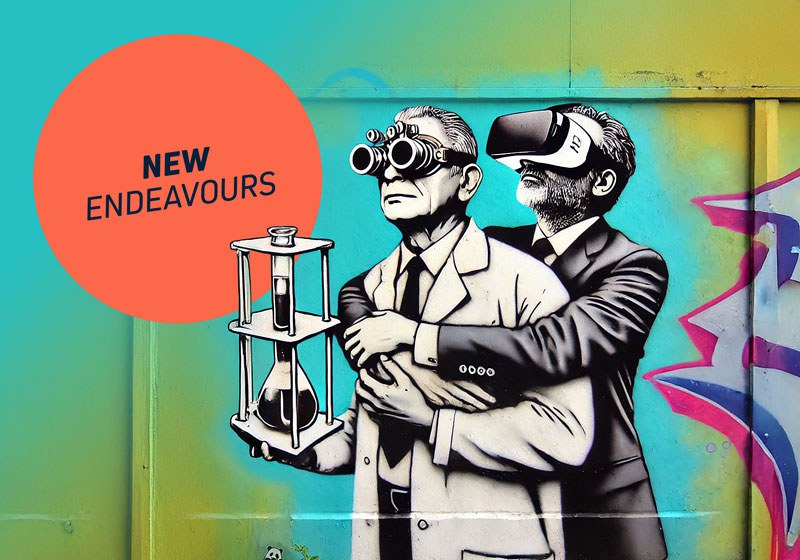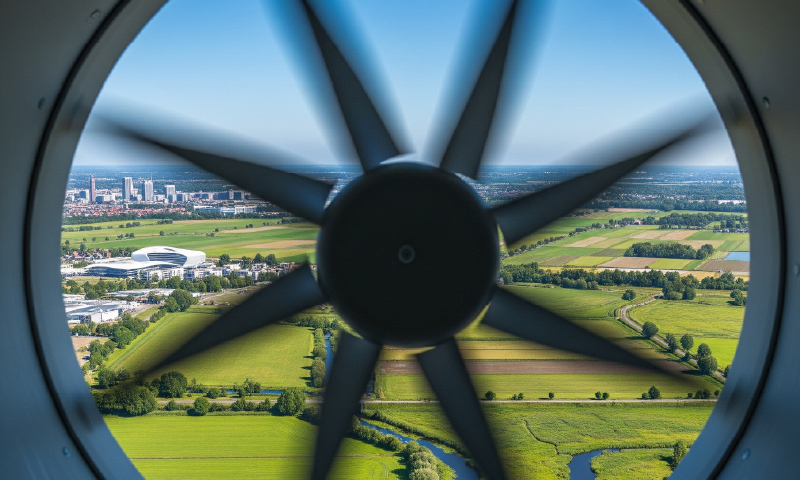Tiny Particles, Big Impact
Science for Everyone – Making Nanoparticles Visible
They’re tiny, invisible, and often underestimated—yet airborne nanoparticles are all around us. They can influence weather and climate, pose serious health risks, and even disrupt sensitive technologies. Now, a new invention from Forschungszentrum Jülich makes them easier to detect—and much harder to ignore.
June 2025
From Aviation Ban to Lab Breakthrough
A deep breath—taken in heavy traffic, in a factory, or at the airport—and we inhale not just air, but countless ultra-fine particles we can’t even see. These nanoparticles silently enter our lungs, potentially harming our health in the long run.
But the impact doesn’t stop with humans. Nanoparticles can also disrupt high-tech industrial processes. In semiconductor manufacturing, for instance, a single rogue nanoparticle can destroy a microchip, where precision down to the nanometer is key. That’s why clean, reliable, and continuous monitoring is critical.
Fast, Accurate, Resource-Saving
Researchers at the Institute of Climate and Energy Systems – Troposphere (ICE-3) have partnered with U.S.-based measurement technology company TSI Incorporated to develop an innovative method to detect airborne nanoparticles—faster, more accurately, and more efficiently than ever before. Bonus: it uses fewer hazardous substances than existing technologies.
The new solution combines two components: a state-of-the-art optical detection system developed by TSI, and a patented Jülich innovation—a special substance that binds to the nanoparticles, enlarging them so they can be optically detected.

»In discussions with expert colleagues, we quickly realized our method had far more potential than we initially thought.«
Dr. Patrick Weber
coordinator of the TSI partnership at the Institute of Climate and Energy Systems -
Troposphere (ICE-3)
Born from a Safety Challenge
Originally, the Jülich team developed the technology for IAGOS—an atmospheric monitoring program using instruments aboard commercial aircraft to collect real-time climate data above the clouds. The issue: their existing particle counter required a flammable and toxic liquid—no longer allowed in aviation due to safety concerns.
Transfer Talents: Patrick Weber Drives Application-Focused Collaboration Forward
What began as a workaround for air travel safety evolved into a scalable solution for multiple fields of application. “At first, the invention was simply about replacing a banned liquid,” says Dr. Patrick Weber, one of the co-inventors. “But as we dug deeper, it became clear we were holding a key to something much bigger.”
Collaborative Work in the Lab
Dr. Patrick Weber (left) is working alongside colleagues from TSI on an optical detection method that enlarges aerosol particles for improved visibility.

Joint Innovation, Real-World Impact
To bring their prototype to market, Jülich researchers teamed up with TSI Incorporated—an industry leader in aerosol and environmental monitoring with its European headquarters in Aachen, Germany.
The resulting technology goes far beyond airplane instrumentation. It can also be used to monitor air quality in cities, cleanrooms, and workplaces where nanoparticle exposure may pose serious health risks. Its compact design even enables mobile or remote deployment—where nanoparticle detection was previously impractical or impossible. One particularly promising use case: supplementing or even replacing today’s expensive and sparse air monitoring networks. If costs drop, access increases—and the invisible becomes visible.
This story is a powerful example of co-creation at Forschungszentrum Jülich—bringing together science, industry, and public interest to transform fundamental research into concrete solutions.
Innovation Through Collaboration: The FZ Jülich Co-Creation Approach


About IAGOS: 30 Years of Science Above the Clouds
Forschungszentrum Jülich has been contributing to the IAGOS research infrastructure for over 30 years, alongside European partners. Together, they collect high-precision atmospheric data—including water vapor, methane, CO₂, ozone, nitrogen oxides, and fine dust.
The insights gained improve climate models, weather forecasts, and long-term environmental monitoring. Today, ten aircraft from eight airlines are equipped with IAGOS instruments. The data feeds directly into major programs like Germany’s new ITMS greenhouse gas monitoring system.
Two years ago, IAGOS transitioned to fully self-funded operations, with international coordination now handled by the non-profit IAGOS-AISBL. Over 300 institutions worldwide use the data—proof that technical innovation and scientific collaboration can drive real-world climate protection.
Discover more about IAGOS
Image: Forschungszentrum Jülich/ Monika Buglowski
Dive deeper into the current issue
When research, industry, and society unite their perspectives, they create solutions greater than the sum of their parts.
In the Endeavours magazine, discover how co-creation works — through real stories of collaboration, pioneering spirit, and successful transfer.








